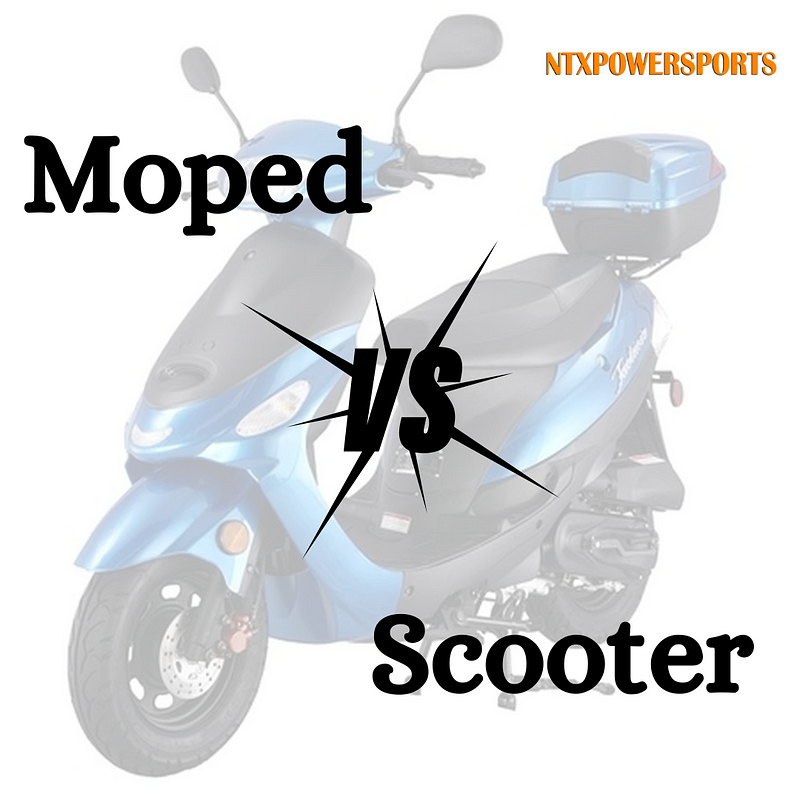A moped differs from a scooter in what way?

Moped:
Definition: A moped is a type of small motorcycle with bicycle pedals, generally having a less powerful engine than a scooter. It usually has an engine displacement of 50cc or less.
Design: Mopeds typically have a step-through frame design, allowing the rider to easily mount and dismount the vehicle. They often feature pedals that can be used to assist the engine or as the primary means of propulsion.
Speed: Mopeds are usually limited in speed, with most models not exceeding 30 mph (48 km/h). This limitation is often imposed by law to classify them separately from motorcycles.
Licensing: In many jurisdictions, mopeds may require a specific license or registration, depending on their engine size and maximum speed capabilities.
Scooter:
Definition: A scooter is a two-wheeled vehicle with a step-through frame and a platform for the rider’s feet. It typically has a more powerful engine than a moped and comes in various engine sizes.
Design: Scooters have a distinctive design with a flat floorboard where the rider can place their feet while riding. They often lack pedals and rely solely on the engine for propulsion.
Speed: Scooters can achieve higher speeds compared to mopeds, with some models capable of reaching highway speeds. They are designed for urban commuting and short to medium-distance travel.
Licensing: Scooters may require a motorcycle license or endorsement to operate, especially if they exceed certain engine displacement or speed limits set by local regulations.
Key Differences:
Engine Size: Mopeds typically have smaller engines (50cc or less), while scooters can have larger engine capacities, ranging from 50cc to over 800cc.
Pedals: Mopeds are equipped with pedals that can assist the engine or serve as the main source of propulsion, whereas scooters do not have pedals and rely solely on the engine.
Speed Limitations: Mopeds are generally limited to lower speeds, often around 30 mph, while scooters can reach higher speeds suitable for urban and highway use.
Licensing Requirements: Due to their differences in speed and engine size, mopeds and scooters may be subject to different licensing regulations based on local laws.
In summary, the main distinctions between mopeds and scooters lie in their design features, engine sizes, speed capabilities, and corresponding licensing requirements.